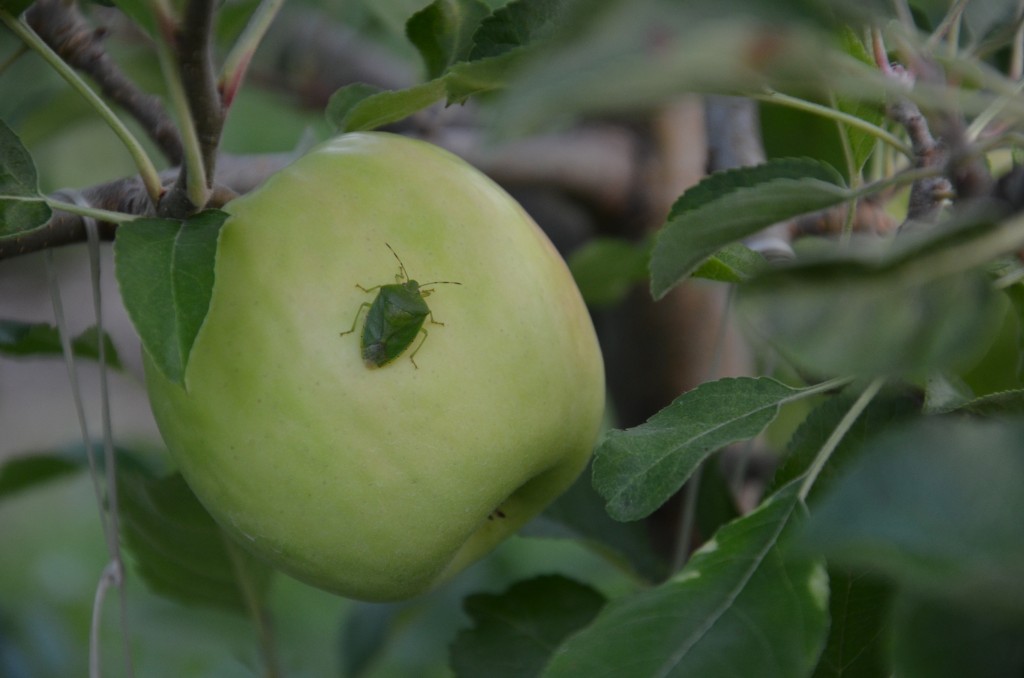
Synopsis: Over the past weeks the native green stink bug (GSB), Acrosternum hilare (Say) [Chinavia hilaris (Say)] (Hemiptera: Pentatomidae) has been observed moving from deciduous forest trees to tree fruit, with egg laying and nymphs present and feeding on agricultural commodities including apple in many locations.
In August, 2012 drought conditions led to severe feeding from the stink bug complex resulting in 20% injury in three sites in Columbia, Dutchess and Ulster Counties. As wet as the 2018 season has been, we continue to see increasing numbers of GSB adults and nymphs, primarily found along the wooded edge of orchards. Injury is just now beginning to appear in infested blocks. This increasing population is likely the result of an emerging 2nd generation.
In blocks with Drape Net covering high valued varieties, we’ve observed GSB moving into trees, feeding on fruit, with stink bug eggs and young nymphs also found. The inability of the net system to exclude stink bug is very discouraging.
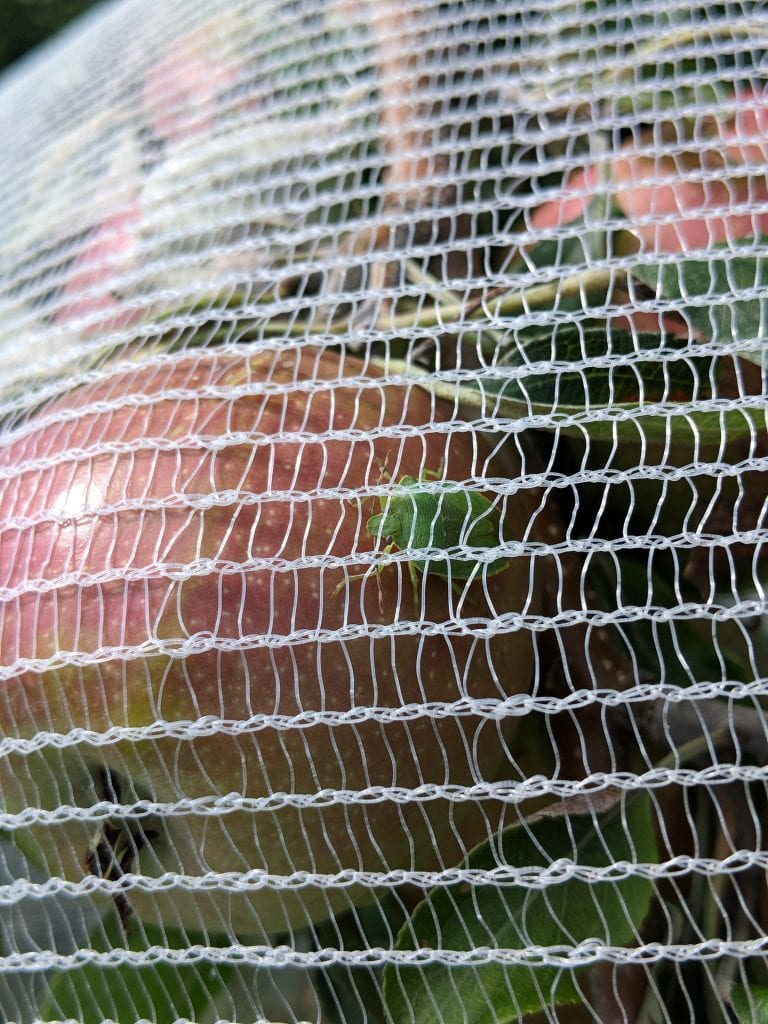
In a number of Huson Valley sites including Milton, Marlboro and Highland we have seen populations and feeding that warrant pest management. We are recommending intensive boarder scouting. Upon finding stink bug adults or nymphs on ochard trees management should begin along the edges bordering woodland.
Overview: The green stink bug and brown marmorated stink bug are arboreal insects, residing in woodland tree hosts. As host resources decline they tend to move to agricultural crops, often during drought conditions. In general stink bugs have become a late season challenge to integrated pest management programs requiring the use of broad-spectrum insecticides in the organophosphate, carbamate, and pyrethroid class of chemistry to provide effective management of the pest.
The neonicotinoid class is considered a reduced risk group of insecticides to replace the organophosphate class for pest management. One of the more effective insecticides in this group, Dinotefuran, has been found to be very effective in managing the stink bug complex. Yet the product not yet been allowed by DEC to receive a NYS label or Section 18 for use on tree fruit against the stink bug complex.
An alternative pest management tool in place of the older classes of insecticides is the neonicotinoid, Actara. Actara (A.I. Thiamethoxam) has conservative 35 DTH and A.I. per acre restrictions. In New York State, do not exceed 0.172 lb. a.i./A (11 oz.) of Actara or thiamethoxam containing products per acre per growing season on Pome Fruit.
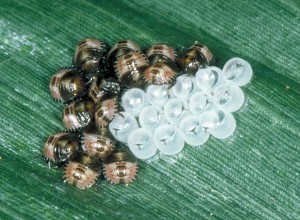
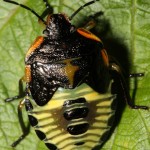
In light of these restrictions, the use of the pyrethroids Bifenthrin (Bifenthure, Brigade) or Fenpropathrin (Danitol) have excellent efficacy against the SB complex and are relatively ‘user friendly’ with lower mammalian toxicity but greater reduction of biological control agents such as the predatory mite T. pyri and predaceous beetle complex.
Below are the materials registered in NYS for use against the BMSB, including efficacy against stink bug in general.
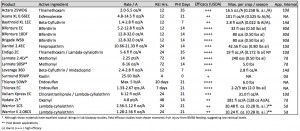
More resources for management of the stink bug complex can be found here.

